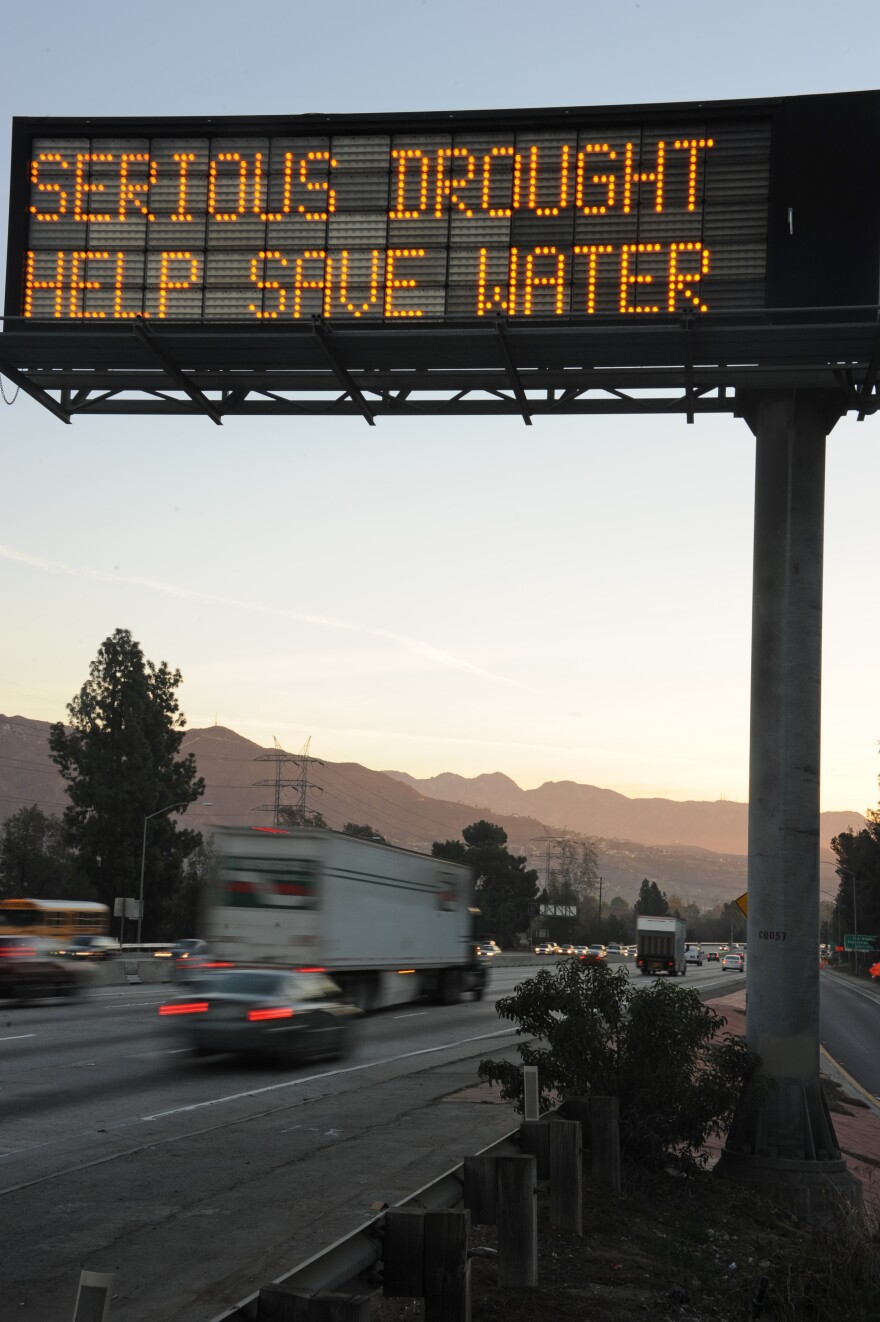With our free press under threat and federal funding for public media gone, your support matters more than ever. Help keep the LAist newsroom strong, become a monthly member or increase your support today.
Water savings rebound slightly after a summer of decline

After California ended mandatory water conservation in June, water use crept up across the state. September put an end to that trend; we used slightly less water than we did in August.
Data released Tuesday by the State Water Resources Control Board showed that statewide water conservation increased slightly in September after three months of backsliding.
That matters because in January, Water Resources Control Board officials will decide whether to return to mandatory conservation. And they'll base that decision on how well Californians saved water over the past few months.
In May, the state water board decided to end mandatory conservation, which had been in effect since June 2015. It had been a nearly normal snow year in the Northern Sierras, the source of 30 percent of Southern California's water, and water agencies were complaining about having to continue to conserve when reservoirs were brimming and grass was turning green.
Instead of being told how much they had to cut back, water agencies had to pass a so-called "stress test": If they could prove they had enough water to meet customers' needs for three more dry years, they would no longer have to meet mandatory conservation targets. For agencies that failed and did not have enough water, the targets would continue.
The vast majority of water agencies in California passed the stress test. And come June, the first month they no longer had to meet mandatory conservation targets, water use began to rise. In Southern California, about 80 percent of water agencies used more water in June 2016 than they had the year before. By the end of August, over 90 percent of the water agencies statewide were using more water than they did last summer.
How did this happen? Water agencies that passed their stress tests relaxed prohibitions on watering lawns and got rid of drought surcharges on water bills. Many of them still had voluntary conservation targets, but that message was lost on water customers.
"Unfortunately in the messaging, in their zeal to say, 'Aren't we clever, we've prepared [for the drought],' they inadvertently sent a message out to the media and the public that they weren't going to conserve anymore, when in fact they were," said Felicia Marcus, chair of the Water Resources Control Board.
So water board officials were excited that water conservation statewide ticked up in September.
In addition, the fall snow season is off to a good start. Still, officials will be keeping a watchful eye on the weather and water conservation efforts through the end of the year, as the Water Resources Control Board prepares for its January decision on whether to return to mandatory conservation.







